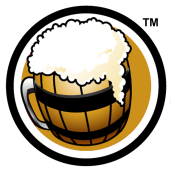Hops
|
Amount
|
Variety
|
Cost
|
Type
|
AA
|
Use
|
Time
|
IBU
|
Bill %
|
|
1 oz |
Perle1 oz Perle Hops |
|
Pellet |
8.2 |
Boil
|
60 min |
28.78 |
33.3% |
|
1 oz |
Domestic Hallertau1 oz Domestic Hallertau Hops |
|
Pellet |
1.8 |
Boil
|
10 min |
2.29 |
33.3% |
|
1 oz |
Willamette1 oz Willamette Hops |
|
Pellet |
4.5 |
Dry Hop
|
5 days |
|
33.3% |
|
3 oz
/ $ 0.00
|
Mash Guidelines
|
Amount
|
Description
|
Type
|
Start Temp
|
Target Temp
|
Time
|
|
7.45 gal |
Single Infusion |
Infusion |
-- |
152 °F |
60 min |
|
2.34 gal |
Batch Sparge |
Sparge |
-- |
170 °F |
5 min |
Starting Mash Thickness:
2.25 qt/lb
|
Other Ingredients
|
Amount
|
Name
|
Cost
|
Type
|
Use
|
Time
|
|
1 tsp |
Irish moss
|
|
Fining |
Boil |
15 min. |
|
76.91 ml |
Phosphoric acid
|
|
Water Agt |
Mash |
1 hr. |
|
86.70 ml |
Phosphoric acid
|
|
Water Agt |
Sparge |
1 hr. |
|
15.97 g |
Chalk
|
|
Water Agt |
Mash |
1 hr. |
|
1 g |
Epsom Salt
|
|
Water Agt |
Mash |
1 hr. |
Target Water Profile
Munich (Dark Lager)
| Ca+2 |
Mg+2 |
Na+ |
Cl- |
SO4-2 |
HCO3- |
|
99.3 |
5.7 |
13 |
8 |
18.5 |
0 |
Rice Hulls:
Add 1lb for every 5 lbs of malt to help with heat distribution.
Pilsner Malt:
Protein rest (122-131F 15 min)
CaraMunich Malt:
Add after mash-out, during vorlauf.
Chocolate Malt:
Add after mash-out, during vorlauf.
De-Husked Carafa III Malt:
Add after mash-out, during vorlauf. |
|
Mash Chemistry and Brewing Water Calculator
|
Notes
Overall Impression:
A smoke-enhanced beer showing good balance between the smoke and beer character, while remaining pleasant to drink. Balance in the use of smoke, hops and malt character is exhibited by the better examples.
Aroma:
The aroma should be a pleasant balance between the expected aroma of the base beer and the smokiness imparted by the use of smoked malts. The intensity and character of the smoke and base beer style can vary, with either being prominent in the balance. Smokiness may vary from low to assertive; however, balance in the overall presentation is the key to well-made examples. The quality and secondary characteristics of the smoke are reflective of the source of the smoke (e.g., alder, oak, beechwood). Sharp, phenolic, harsh, rubbery, or burnt smoke-derived aromatics are inappropriate.
Appearance:
Variable. The appearance should reflect the base beer style, although the color of the beer is often a bit darker than the plain base style.
Flavor:
As with aroma, there should be a balance between smokiness and the expected flavor characteristics of the base beer style. Smokiness may vary from low to assertive. Smoky flavors may range from woody to somewhat bacon-like depending on the type of malts used. The balance of underlying beer characteristics and smoke can vary, although the resulting blend should be somewhat balanced and enjoyable. Smoke can add some dryness to the finish. Harsh, bitter, burnt, charred, rubbery, sulfury, medicinal, or phenolic smoky characteristics are generally inappropriate (although some of these characteristics may be present in some base styles; however, the smoked malt shouldn’t contribute these flavors).
Mouthfeel:
Varies with the base beer style. Significant astringent, phenolic smoke-derived harshness is inappropriate.
Comments:
This style is for any beer that exhibits smoke as a principal flavor and aroma characteristic other than the Bamberg-style Rauchbier (i.e., beechwood-smoked Märzen), which has its own style. Any style of beer can be smoked; the goal is to reach a pleasant balance between the smoke character and the base beer style. Entries should be judged on how well that style is represented, and how well it is balanced with the smoke character. Entries with a specific type or types of smoke cited will be judged on how well that type of smoke is recognizable and marries with the base style. Judges should evaluate the beers mostly on the overall balance, and how well the smoke character enhances the base beer.
History:
The process of using smoked malts has been adapted by craft brewers to many styles. German brewers have traditionally used smoked malts in bock, doppelbock, weissbier, dunkel, schwarzbier, helles, Pils, and other specialty styles.
Characteristic Ingredients:
Different materials used to smoke malt result in unique flavor and aroma characteristics. Beechwood, or other hardwood (oak, maple, mesquite, alder, pecan, apple, cherry, other fruitwoods) smoked malts may be used. The various woods may remind one of certain smoked products due to their food association (e.g., hickory with ribs, maple with bacon or sausage, and alder with salmon). Evergreen wood should never be used since it adds a medicinal, piney flavor to the malt. Noticeable peat-smoked malt is universally undesirable due to its sharp, piercing phenolics and dirt-like earthiness. The remaining ingredients vary with the base style. If smoked malts are combined with other unusual ingredients (fruits, vegetables, spices, honey, etc.) in noticeable quantities, the resulting beer should be entered in the Specialty Smoked Beer.
Entry Instructions:
The entrant must specify a Classic Style base beer. The entrant must specify the type of wood or smoke if a varietal smoke character is noticeable.
Vital Statistics: Varies with the base beer style.
Commercial Examples:
Alaskan Smoked Porter, Schlenkerla Weizen Rauchbier and Ur-Bock Rauchbier, Spezial Lagerbier, Weissbier and Bockbier, Stone Smoked Porter
Tags:
specialty-beer, smoke

Last Updated and Sharing

- Public: Yup, Shared
- Last Updated: 2019-10-29 22:22 UTC
For quick copying and pasting to a text based forum or email.
Click the Download as HTML file button below.
Recipe costs can be adjusted by changing the batch size. They won't be saved but will give you an idea of costs if your final yield was different.
|
Cost $ |
Cost % |
| Fermentables |
$ |
|
Steeping Grains
(Extract Only) |
$ |
|
| Hops |
$ |
|
| Yeast |
$ |
|
| Other |
$ |
|
| Cost Per Barrel |
$ 0.00 |
|
| Cost Per Pint |
$ 0.00 |
|
| Total Cost |
$ 0.00 |
|
Discussion about this recipe:
